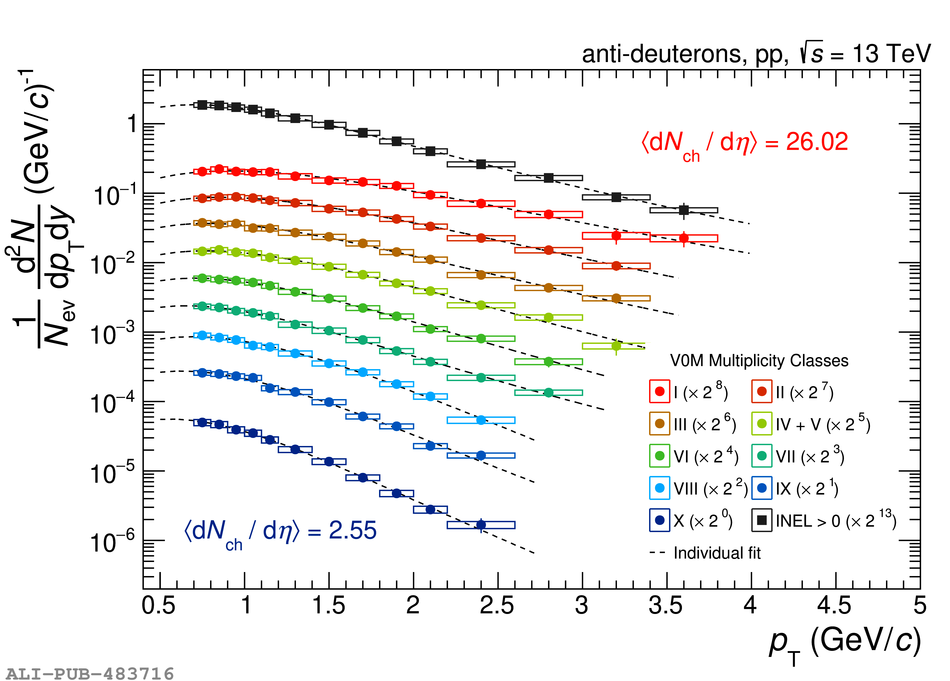The study of (anti-)deuteron production in pp collisions has proven to be a powerful tool to investigate the formation mechanism of loosely bound states in high energy hadronic collisions. In this paper the production of (anti-)deuterons is studied as a function of the charged particle multiplicity in inelastic pp collisions at $\sqrt{s}=13$ TeV using the ALICE experiment. Thanks to the large number of accumulated minimum bias events, it has been possible to measure (anti-)deuteron production in pp collisions up to the same charged particle multiplicity ($\rm{d} N_{ch}/\rm{d}\eta\sim26$) as measured in p-Pb collisions at similar centre-of-mass energies. Within the uncertainties, the deuteron yield in pp collisions resembles the one in p-Pb interactions, suggesting a common formation mechanism behind the production of light nuclei in hadronic interactions. In this context the measurements are compared with the expectations of coalescence and Statistical Hadronisation Models (SHM).
Eur. Phys. J. C 80 (2020) 889
HEP Data
e-Print: arXiv:2003.03184 | PDF | inSPIRE
CERN-EP-2020-025


